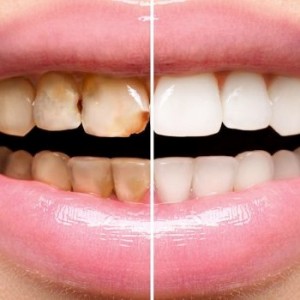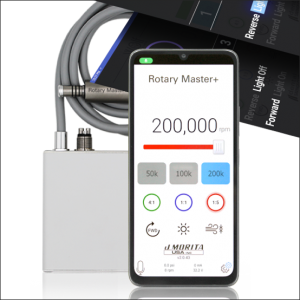
Exposing dental implants into the sinus cavity: complications and survival
Lara Figini
The edentulous posterior maxillary region often presents with unique challenging conditions in implant dentistry. Limited bone height secondary to pneumatization of the maxillary sinus and the resorption of the alveolar ridge preclude in many instances the installation of dental implants. To compensate for the lack of bone height, several treatment options have been proposed, including the placement of short implants (a technique that is certainly more conservative and minimally invasive), the use of bone grafts or fillers, the sinus augmentation technique with or without regenerative. The maxillary sinus is a para-nasal pyramid-shaped cavity covered by the Schneiderian membrane. The integrity of the membrane is important for the execution of breast augmentation procedures and to avoid potential complications. However, membrane perforation is the most common complications and occurs approximately in 15.7% of cases. Some literature studies have even suggested that these perforations do not have a l negative impact on implant survival or on the future complications.
MATERIALS AND METHODS
In a systematic review published on the International Journal of Implant Dentistry, the authors investigated the relevance of implant intrusion into the maxillary sinus (without regenerative techniques) on implant survival and possible related complications. A search of the electronic and world manual literature was performed by two independent reviewers using various databases, including MEDLINE, EMBASE and Cochrane Oral Health Group Trials Register, for articles up to January 2018 reporting outcome of implant placement perforating the sinus floor without regenerative procedure (lateral sinus lift or transalveolar technique) and graft material. The intrusion of the implants can occur during drilling or implant placement, with and without punch out Schneiderian. Only studies with at least 6 months of follow-up were included in the qualitative assessment.
RESULTS
Eight studies provided information on the survival rate, with a total sample of 493 implants, and with a weighted survival rate of 95.6% (95% CI), after 52.7 months of follow-up. The penetration level of the implant (≤4mm or >4mm) did not report statistically significant differences in the survival rate (p = 0.403). Seven studies provided information on the rate of clinical complications, with an average complication rate of 3.4% (95% CI). The most frequent clinical complication was epistaxis, without finding significant differences according to the level of penetration. Five studies provide information on the radiographic complication; the most common complication was thickening of the Schneiderian membrane.
CONCLUSIONS
From the data emerging from this systematic review, which must be confirmed by results of similar revisions, it can be concluded that the overall survival rate of implants with an emergency in the maxillary sinus is 95.6%, without statistical differences based on the level of penetration. Clinical and radiological complications are 3.4% and 14.8%, respectively. The most frequent clinical complication is epistaxis, and the radiological complication is the thickening of the Schneiderian membrane, without statistically significant difference based on the level of penetration of implant inside the sinus.
CLINICAL IMPLICATIONS
Several limitations could be described for the present review. Firstly, there is a lack of a control group in the included studies, to compare outcomes and complications, with implant placed in native bone, or with regenerative techniques. Second limitation was related to the types of included studies being seven retrospectives and one prospective study. Third, the lack of a reliable method to evaluate the millimeters of implants intruded inside the maxillary sinus and to assess sinus membrane perforation or not. Fourth, the analysis of the radiographic complications has been analyzed only in three studies with computerized tomography and in two studies by orthopantomographies and periapical radiographs.
(Photo credit: Dr. Danilo Alessio Di Stefano)
For additional informations:
Influence of exposing dental implants into the sinus cavity on survival and complications rate: a systematic review
Italian version: http://www.odontoiatria33.it/implantologia/17549/intrusione-di-impianti-nel-seno-mascellare-complicanze-e-sopravvivenza.html
 Related articles
Related articles
Implantology 06 November 2025
The irreversible trend toward digitization in dentistry and dental technology has resulted in technical progress and continuous changes to conventional workflows.
News 23 October 2025
The global dental implants market is projected to grow from USD 5.45 billion in 2024 to USD 15.41 billion by 2035, expanding at a CAGR of 9.95% from.
This systematic review aimed to provide an overview of zirconia implants as well as regarding the outcome of the implant-restorative complex in preclinical studies.
Implantology 02 September 2025
Innovation in dentistry: a study on the development of the dental implants industry
Numerous professions face similar technological challenges. In the field of dentistry, specifically, replacing missing teeth has always been a formidable obstacle.
Editorials 07 August 2025
Researchers are developing ‘smart’ implants that would provide a more natural feel while chewing or talking
 Read more
Read more
Oral pathology 25 November 2025
Virtual microscopy (VM) is a technology for showing microscope slides using computers and could be considered a progression of classic methodology using optical microscopes.
For every assist this season, the insurance provider will donate $25 to TUSDM Cares for Veterans
Products 25 November 2025
J. MORITA USA, a world leader in handpiece technology, has announced the Rotary Master+ Electric Motor. Compatible with Morita TorqTech electric attachments and most competing electric handpieces on...
News 25 November 2025
Let’s be honest: nothing kills the vibe quite like bad breath. However, while 85% of people prefer for someone to tell them if their breath needs some freshening up, only 15% are willing to break...
News 25 November 2025
Vitana Pediatric & Orthodontic Partners (Vitana), a dentist-led dental partnership organization (DPO) focused exclusively on elite pediatric dental and orthodontic practices with operations in...















